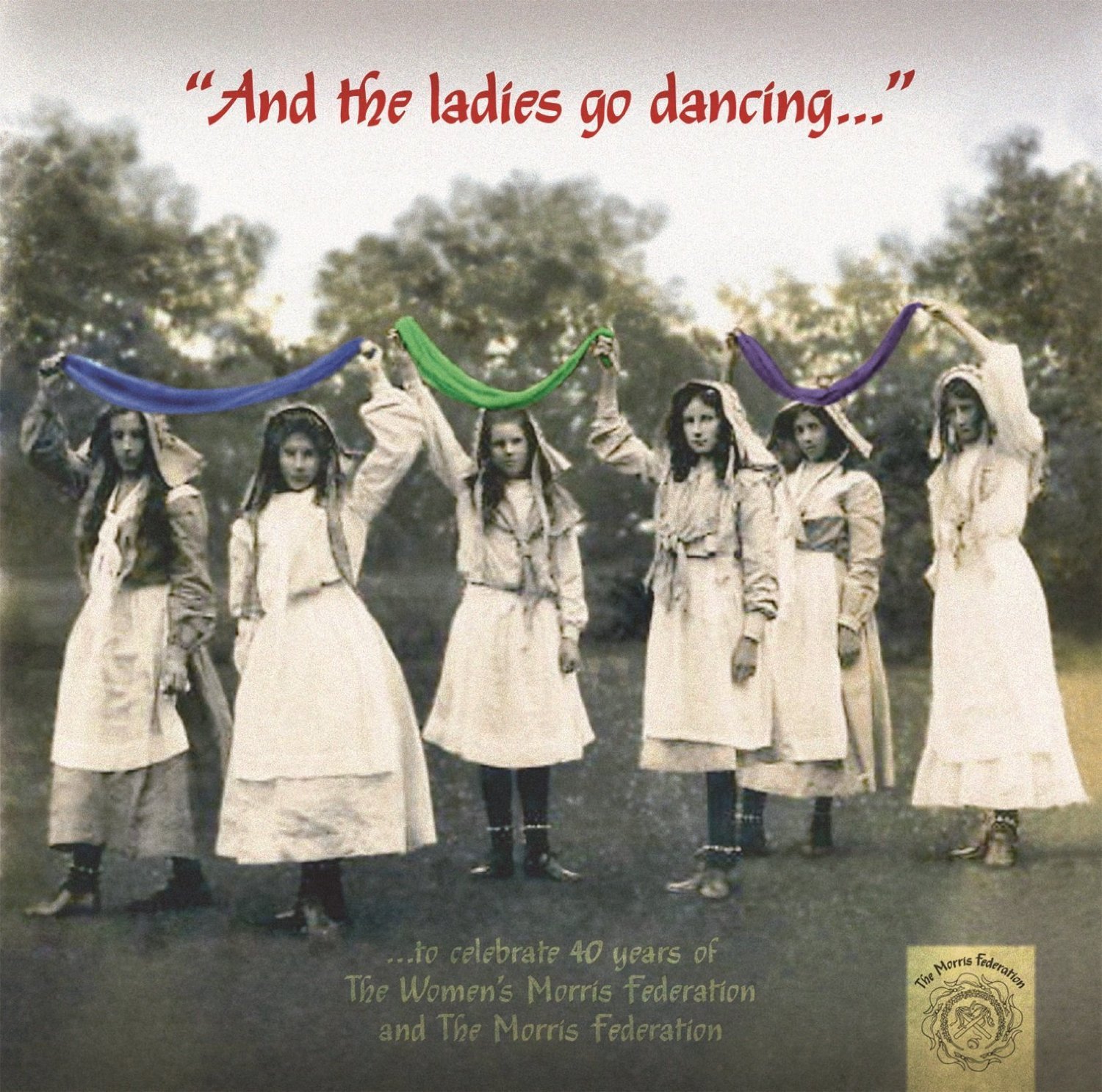- Homepage /
- Shop /
- The Morris Federation
- /
- And The Ladies Go Dancing (2CD)
And The Ladies Go Dancing (2CD)
There was a dramatic rise in the number of women publicly dancing morris in the early 1970s, with several female Cotswold and NorthWest morris sides forming.
This followed a period of three or four decades during which a ‘male only’ climate had been allowed and encouraged to prevail in morris circles. The emergence of female dancers was greeted with some hostility by those who considered it to be ‘untraditional’. Only the Carnival Morris of the NorthWest, usually performed by teams of young girls, had continued as an example of public female morris during this time. This itself had been considered a deviation from the ‘pure’ tradition, rather than a continuation of it, and had been virtually dismissed by some as irrelevant anyway. It must be said that, while morris would appear always to have been a predominantly male pursuit, it was never exclusively so.
The idea of an organisation to provide information and moral support for these newly formed women’s sides was first mooted in 1973 and, following a period of informal contact, the Women’s Morris Federation was officially inaugurated in October 1975.At first, much emphasis was placed on the historical validity of female morris, both by its exponents and its opponents.
Later, the opinion expressed by many was that morris dancing should be seen and treated as a living, evolving tradition which of necessity reflects the society in which it plays a part. To try to preserve it exactly as it is at some arbitrary point in time would be to prevent it from taking its natural course, so fossilising it.
The Federation thus began as an organisation for female sides only. In 1980, it opened its doors to mixed sides and in 1982 it became open to any morris side, regardless of gender. A year later, the word ‘Women’s’ was dropped from the name. The Federation has always taken the view that the dances themselves are more important than the gender of the dancers who perform them.
It seeks to encourage all who are interested to experience the pleasure of morris dancing and to strive for the highest standard of execution of which they are capable.
£9.99
Description
Description
DISC ONE
1. Dancing At Whitsun / The Valentine (Crucible)
2. Ampleforth (Haddo)
3. Medlock (Chelmsford Morris)
4. Dearest Dickie (Richard Arrowsmith & Jo Maher)
5. Redesdale Hornpipe / Humours Of California (Datchet Border Morris)
6. New St George (The Wilson Family)
7. Calling On / Black Joke / Rusty Gully (Sheffield City Morris)
8. Orange In Bloom (Haddo)
9. The Gazebo Trot / Brivitting In The Cauliflowers (John Kirkpatrick)
10. Dance Up The Sun (cloudstreet)
11. Old Hobb (Dead Horse Morris)
12. Stone Monkey Rapper Sword Dance Set DERT 2011 (Sarah Matthews)
13. Jockey To The Fair (Adderbury MM)
14. Steamboat (Hobos Morris)
15. The Captains Song (Crucible)
16. Bluff King Hal (John Kirkpatrick)
17. Borderline (Chelmsford Morris)
18. Trunkles (Richard Arrowsmith & Jo Maher)
19. Upton Upon Severn Stick Dance (Datchet Border Morris)
20. Shrewsbury Flourish (Shrewsbury Morris)
21. Old Bones – Barrack Hill (The Witchmen)
22. The Dance Of England (Colin Cater)
DISC TWO
1. The Rapper Set (The Teacups)
2. Idbury Hill (Chelmsford Morris)
3. Birds A Building (Hornbeam Molly)
4. Mandy Lin (Hobos Morris)
5. Willow Tree (Haddo)
6. Penny For The Ploughboy (Colin Cater)
7. Four Up (Grandson Of Morris On)
8. Barnyard Slide (Feet First)
9. Old Tom Of Oxford (Haddo)
10. Come See The Boys Go Round (Paul & Liz Davenport)
11. Margaret’s Morris (Shrewsbury Morris)
12. Queen’s Delight (Richard Arrowsmith & Jo Maher)
13. Shreds And Patches (John Kirkpatrick)
14. Alderley Mummers Song (Adlington Mummers)
15. Foul Mouthed Cat (Mythago)
16. Hammersmith Flyover (John Kirkpatrick)
17. Wooden Swords And May Queens (Gavin Davenport)
18. Whiteladies (Babylon)
19. Midnight On The Water (Eric Foxley)
20. Glorishears/All The World/The Yellow Tree/Banks Of The Dee (Laurel Swift & Saul Rose)
21. Rolling Home (Sheffield City Morris)
